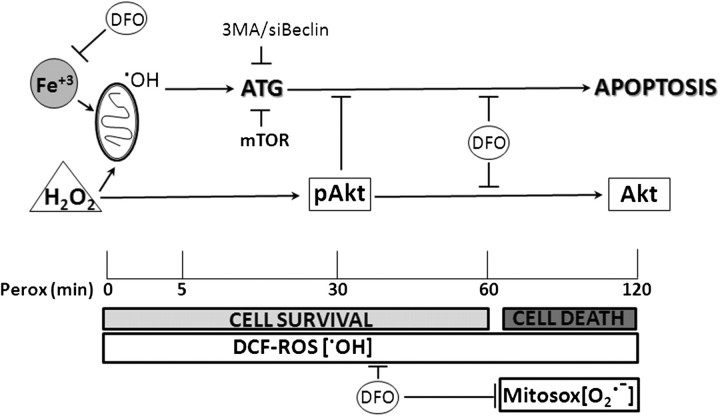FIG. 12.
Schematic representation of the results. H2O2 triggers two parallel and independent pathways, one leading to induction of autophagy, the other to transient Akt phosphorylation. Induction of autophagy depends on the mitochondrial generation of hydroxyl radicals, which arise from Fenton reaction between H2O2 and redox-active iron. The mTOR pathway is inactive in oxidative-stressed cells. Akt phosphorylation does not preclude autophagy but prevents apoptosis in H2O2-stressed cells. However, prolonged incubation in the presence of H2O2 leads to Akt dephosphorylation and autophagy-dependent cell death. DFO, by sequestering iron within lysosomes, prevents the prompt formation of hydroxyl radicals (as well as of superoxide anion, which appears later) and, consequently, of autophagy and apoptosis induced by H2O2. DFO also prevents Akt dephosphorylation. 3MA and siRNA-beclin-1 prevents autophagy and cell death.

